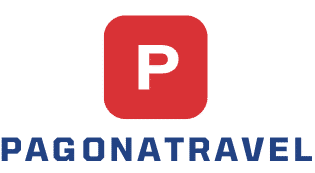As we navigate the bustling, fast-paced world of public transportation in the UK, we are often faced with one constant – the price of tickets. For years, transportation fares have been fixed for each route, regardless of the time, day, or demand for the service. But as user demands evolve, it is time to consider a more fluid pricing model. This article will explore how to implement a dynamic pricing model for public transportation, focusing on strategies, benefits, challenges, and case studies.
Embracing Dynamic Pricing in Public Transportation
Dynamic pricing is a strategy where businesses set flexible prices for their products or services based on current market demands. In the context of public transportation, this means altering ticket prices according to the number of passengers, time of day, or special events.
Also to see : How to Develop a Sustainable Workplace Wellness Program in the UK?
The question then arises, how can a dynamic pricing model be implemented in the UK’s public transportation sector?
Utilising Data for Dynamic Pricing
The first step towards implementing dynamic pricing in public transportation is gathering and analysing data. This involves collecting information on ticket sales, passenger count, time of travel, and any other relevant factors.
Also to discover : What’s the Role of Community Energy Projects in Empowering UK Neighbourhoods?
This data is essential as it provides insights on travel patterns and peak hours, helping transport providers determine when to raise or lower prices. For example, if data shows that a large number of people travel during rush hours, prices may be increased during this time to manage demand and maximise revenue.
Moreover, implementing a data-based pricing model will allow for real-time adjustments. This means that if an unexpected event causes a surge in demand – such as a sports game or concert – transport providers can react swiftly, adjusting prices to meet this sudden increase in demand.
Developing Pricing Strategies
With relevant data at hand, the next step is the development of pricing strategies. Given that dynamic pricing involves changing fares based on factors like demand and time, it’s crucial to develop a set of criteria for price alterations.
For instance, transport providers could institute a base fare that applies during off-peak times, with prices then increasing during peak hours. Special event fares could also be implemented, with prices rising when there is a high demand for transport to a particular event.
Whatever the specifics, the central aim should be to balance passenger demand with available capacity, all while optimising revenue.
Dealing with Challenges
Like any significant change, implementing dynamic pricing in public transportation comes with its share of challenges. For one, there may be resistance from the public, especially those who frequently use public transport during peak hours. It’s crucial to communicate the benefits of dynamic pricing to the public clearly, helping them understand that this model can improve service efficiency and potentially fund improvements to the transport network.
Another challenge is ensuring the accurate collection and analysis of data. Transport providers must invest in robust systems to gather and process data effectively. The handling of personal data also raises privacy concerns, so clear policies on data protection must be in place.
Case Studies: Learning from Others
The dynamic pricing model is not a new concept. It’s been successfully implemented in various sectors around the world, including public transportation. Looking at these case studies can provide valuable insights into best practices and potential pitfalls.
For instance, Singapore’s public bus services adopted a dynamic pricing model for pre-booked, shared bus services. The fare varies depending on factors such as demand, travel distance, and booking time. Similarly, Uber uses surge pricing during periods of high demand to encourage more drivers to become available.
In the context of the UK, a pilot project in 2017 saw Chiltern Railways use a mobile app to offer discounted tickets during off-peak hours, effectively implementing a form of dynamic pricing.
Learning from these examples, UK transport providers can devise their strategies for dynamic pricing, benefiting both their operations and their passengers.
Moving Forward
Implementing a dynamic pricing model in the UK’s public transportation sector is not a straightforward task. It involves careful planning, data collection, strategy development, and public communication. However, the potential benefits make it an endeavour worth pursuing.
As we move forward into a future where demand patterns continue to shift, dynamic pricing can be a powerful tool for transport providers to maintain efficiency and maximise revenue. While the journey may be complex, the destination promises a more responsive, user-focused public transportation system.
Enhancing Customer Experience and Maximising Total Revenue
As we delve deeper into the process of implementing dynamic pricing in public transport, it’s essential to highlight that an effective pricing strategy must consider both the customer experience and the maximisation of total revenue.
A well-implemented dynamic pricing model can enhance the customer experience by reducing overcrowding during peak times. By adjusting ticket prices in real-time to reflect demand, passengers can be incentivised to travel during off-peak periods, thereby spreading demand more evenly throughout the day. This can lead to less crowded public transport during rush hours, resulting in a more comfortable journey for passengers.
Moreover, dynamic pricing can help transport providers maximise their total revenue. By applying higher fares during peak times or when demand is high due to special events, transport providers can capitalise on these high-demand periods to boost revenue.
However, while implementing dynamic pricing, transport providers must be cautious not to alienate passengers with excessive or unpredictable pricing. It’s essential to strike a balance between maximising revenue and maintaining affordability for passengers. Clear communication about how the dynamic pricing model works and why it’s beneficial can help mitigate any potential backlash.
Machine learning algorithms could be used to predict demand patterns and set optimal prices. However, the use of such advanced technology necessitates robust data privacy measures to protect passenger information.
Leveraging Advanced Data Analytics and Machine Learning Algorithms
Implementing a successful dynamic pricing model requires detailed insights into passenger behaviour, demand patterns, and other relevant factors. This is where advanced data analytics and machine learning algorithms come into play.
Data analytics involves analysing large volumes of data to uncover hidden patterns, correlations, and other insights. In the context of public transport, this could involve analysing data on passenger numbers, travel times, ticket sales, and more. These insights can then be used to inform pricing strategies, ensuring that prices are set at the optimal level to balance demand and maximise revenue.
Meanwhile, machine learning algorithms can learn from this data over time, improving their ability to predict future demand patterns. This can enable transport providers to proactively adjust their pricing in anticipation of changes in demand, rather than just reacting to them in real time.
However, the use of advanced data analytics and machine learning does raise some concerns regarding data privacy. As such, it’s vital that transport providers have a robust privacy policy in place, ensuring that all data is handled in compliance with data protection regulations.
Conclusion
The journey towards implementing a dynamic pricing model for the UK’s public transportation sector is not without challenges. But with careful planning, effective use of data analytics, development of strategic pricing strategies, and clear communication with the public, this endeavour can lead to enhanced customer experience and maximised total revenue.
The dynamic pricing model, powered by machine learning algorithms for demand prediction and real-time price adjustment, is the future of public transportation. As we move into this future, the focus should be on harnessing the power of dynamic pricing to create a more efficient, user-focused transport system that balances the needs of both passengers and transport providers.
As we continue to explore and implement dynamic pricing, we’ll be paving the way for a more responsive, adaptable, and efficient public transportation sector in the UK. The journey may be complex, but the potential rewards make it an exciting and worthwhile venture.











